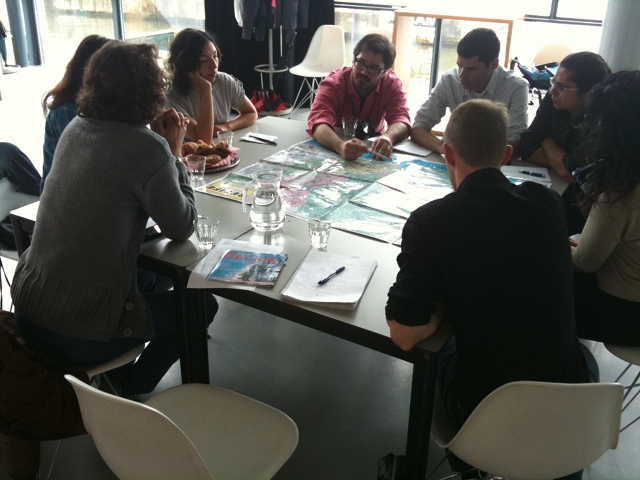During the fourth video conference three mayor issues were discussed: the final student plans on the Via Mangue project, the plan for revitalizing the inner city of Recife and the water situation in Recife. Since the first two subjects were extensively described in earlier posts, we will now focus on the water issue.
In Amsterdam cleaner water and a nice waterfront turn out to be huge assets for the identity of a location and a better liveability of an area. The water also offers opportunities to generate sustainable energy. In all these matters it's very important to have the community involved. How are these things going in Recife?
There is a big problem in Recife with pollution of the surface water by sewage because the sewage system is very basic. Architect Julien Ineichen investigates ways to work on a better sanitation system using architecture. A key thing is to tackle the cultural problem that the Recifens don't seem to care for cleaner water. For this purpose he conducts the campaign 'Eu quero nadar no Capibaribe, e voce?/I want to swim in the Capibaribe, and you?'. Via a website (http://capibaribe.info/, http://swimmingtherivers.net/) and regular events he aims to create a positive identity of the Capibaribe and invites the public to participate.
Paulien Hartog from Waternet is impressed by the project; it seems to be a good initiative to trigger community involvement. The main question if people are willing to change their behaviour, is a challenge in Amsterdam as well. We may have a good 'top-down system' but we have to combine it with bottom-up initiatives. A nice reference are swimming pools in the river like they have in Amsterdam, Kopenhagen and Berlin. People can experience what it would be like to swim in the river.
Regarding the sewerage system in Recife, this should obviously be improved. In Amsterdam we have an efficient system, but because this 'traditional' system is firmly in place, newer, better systems are difficult to implement. Having areas with no system at all is sometimes a good thing, so you can immediately start with realizing the best solutions.
Ana Virginia from COMPESA (Sanitation company of Pernambuco) explains how Recife is working on better water sanitation. The sewerage system is facilitated by Compesa, the public water drainage by the municipality. The two networks sometimes are interconnected – without the owners knowing! - which often leads to overuse. Together with private parties they now are working on a project to provide sewerage for the whole metropolitan region of Recife.
Hanneke's Boom Amsterdam
A main challenge, both in Recife and in Amsterdam, is how to make sure drainage and sanitation solutions are integrated in urban development.
Flora van Gaalen










